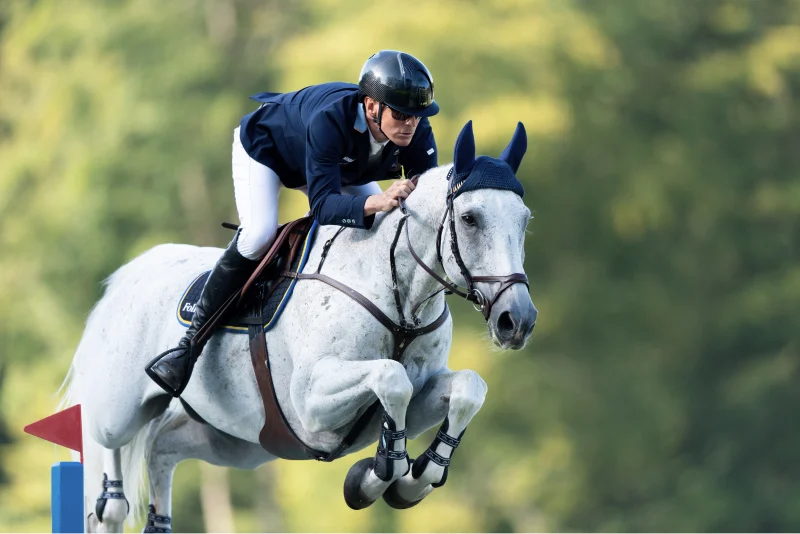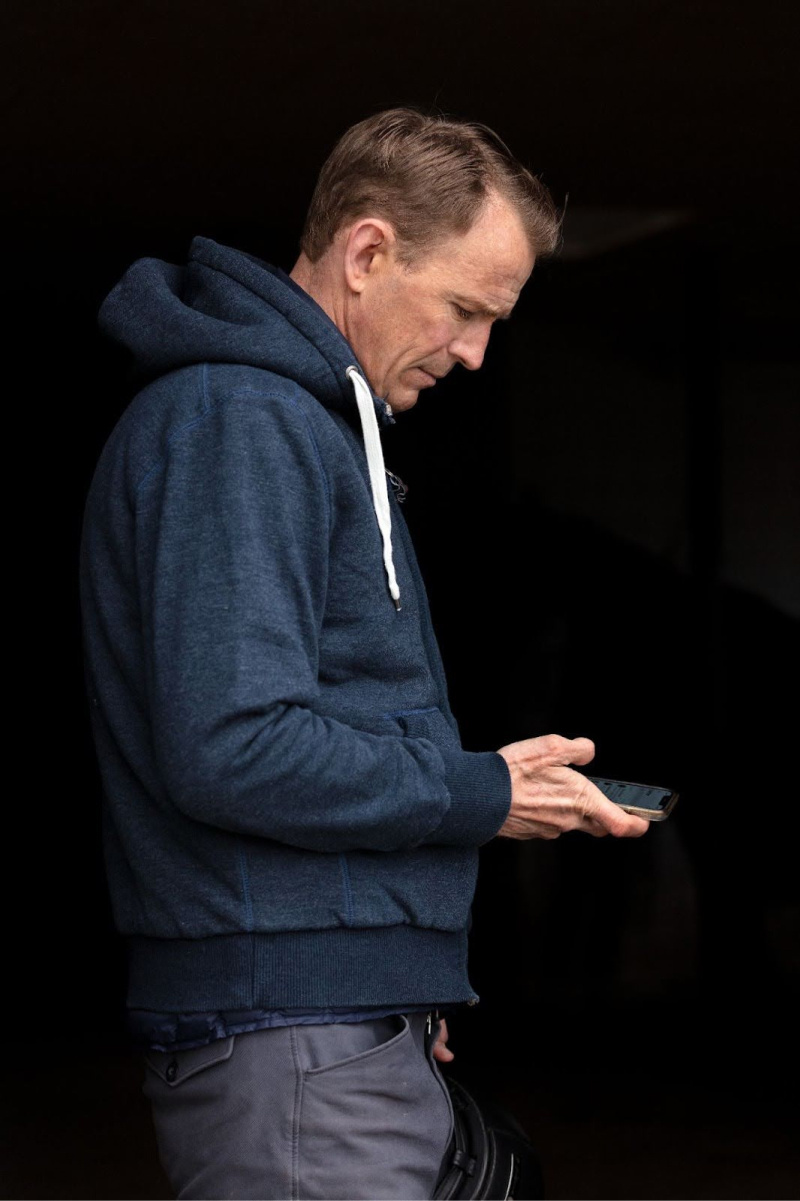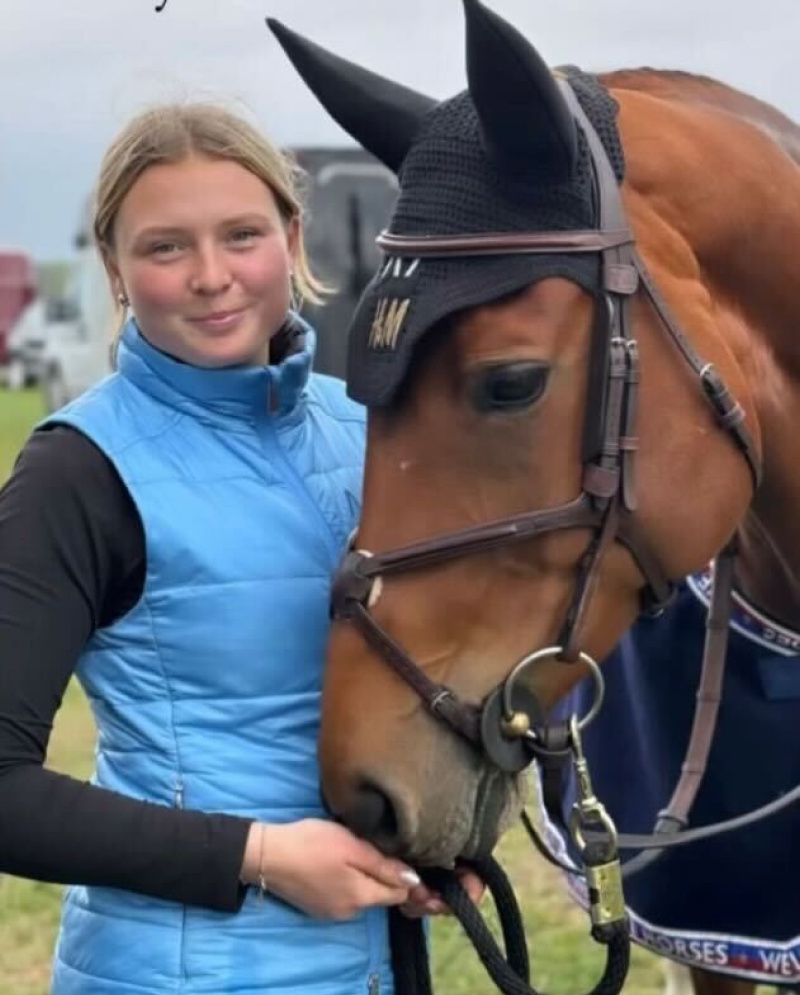
4 June 2024
Spending a few hours with Peder is a privilege; his passion for horses and the sport is evident. His athletic partnerships are just that, partnerships.
“As a rider, the health and well-being of the horse is your responsibility. We must be engaged, curious and committed to learning more,” Peder explains.

When we meet Peder, he has used Sleip for some time himself and has now made monitoring through the app routine at Grevlunda. We are here to train his team, “sleip” a couple of horses and discuss data interpretation.
“I’ve grown up hearing a lot about gait analysis and equine biomechanics from my father, which means it’s not such a leap to bring it into my routine. I understand and appreciate the science behind it.”
Maybe you’ve heard of Ingvar “Fredric” Fredricson? Peder's father, a renowned veterinarian and equine biomechanics researcher. His work in the 1960s laid the foundation for modern gait analysis, and he looked to technology to better understand horse motion. However, it would take the development of mobile phone technology, particularly cameras, and breakthroughs within AI to make gait analysis accessible for routine use.
Peder is progressive and curious when it comes to improving the management of his horses. He heard about Sleip from his father, of course. But also from his sister-in-law, Isabelle Fredricson, who had been using the app as veterinarian at Flyinge, the Swedish national equestrian centre.

"I'm always on the lookout for things that can make us better. Sometimes you get a good idea or come across something that seems interesting, but it’s just not doable in the everyday. You do it once, twice, or every once in a while, which has little effect. Sleip is spot-on in that regard. It’s easy to use, and doing so over time contributes to a deeper understanding of how the horses are doing,” says Peder.
"With the Sleip app, we can easily and continuously gauge how the horses are moving. This way, if anything is off, we can pick it up early. It also gives the team around the horse a shared picture when discussing how it’s doing."
"For example, if I have horses on the way to a competition, my groom can record them through the Sleip app. The recordings give me insights – and hopefully peace of mind. The documentation also makes it easier to talk to the rest of the team, including the vet, as everyone looks at the same thing," says Peder.
All horses at Grevlunda are Sleiped every other week, both on the straight line and on the circle in both directions. Matilda Carlson is a groom at Grevlunda, and appreciates the new routine.
“We do have one horse that tends to throw her head up and down, she is a little fresh... That can make it difficult to get a good enough recording for the AI to analyse. But apart from that, it’s a very easy tool to use!” says Matilda.

“At the moment we have 7 horses here, five of which are in competition form. Some horses look a little different in themselves, but with Sleip we can monitor them based on their individual movement patterns by comparing measurements over time. We get to know the sound baseline,” she explains.
Apart from the regularly scheduled checks, Matilda and her colleagues sometimes Sleip a horse if they sense a change in the way the horse moves.
“It’s nice to get that extra confirmation, and the analyses also make it easier when discussing a horse’s status, whether with Peder or the vet or physiotherapist", says Matilda.

Peder comments: “You may feel that something is not 100% right, and Sleip gives you data to back you up and the documentation to discuss with the team and take action.”
He goes on to explain that while tools like Sleip are useful, you need to assess the whole and you need to know your horse well, every inch of it.
“At the end of the day, I'm the one responsible for my horse's health. I take that responsibility very seriously. I truly value the advice I get from vets, but I'm the one who's with my horse every day."
Discussions surrounding horse welfare in equestrian sports have increased in the past couple of years. It’s a discussion Peder welcomes.
”I genuinely welcome the discussion. The key to great relationships and athletic success is to look at the horses with the right mindset – love and respect. Often, when it goes wrong, people see other things in the animal, like investment, money, or success.”
To Peder, it's crucial that his horses are physically healthy and that they enjoy the work. “It's essential to be tuned in to the horse. If something is wrong, I want to spot it early and act on it quickly," Peder says.
For that, he says, we need broad knowledge and a holistic approach. For example, Sleip is a deep dive into a specific area, bringing valuable insights based on motion. That’s a significant part of the puzzle, but you have to be interested in the whole puzzle if you’re going to train and compete with horses in a sustainable way. The horse health industry is sometimes seen as traditional and resistant to new technology. Peder thinks the challenge lies in combining human intelligence and knowledge with what technology can tell you.

"Like when you're working a horse in a canter, you might feel if it's getting tired, or you could look at what the heart rate monitor says. It's a bit of a juggle to use both. If you lean too much on gadgets, you might lose touch with your gut feelings. But if you ignore the tech, you might not push your horse enough to get better. Sure, trying new stuff can be tough, and there's much to learn, but it usually ends up being worth it if you're ready to put in the effort," Peder explains.
Peder has competed at the very highest level of the sport for decades, and part of his success comes from how he structures his season.
“I often split my season into performance phases and development phases. When we get closer to important events like the Olympics, I like to stick to my existing routines and not change anything. Between the performance phases, I have development phases, where I take a good look at how I do things to see if there’s room for improvement and if we should bring anything new into our routines,” Peder says.
“For instance, I tried Sleip myself in the autumn and saw that it can help us. Now I’ve gotten my team on board to make it routine. That’s just one of many small tweaks”, he explains. "I love learning and finding new ways to make things exciting. I could never be happy just doing the same routines every year.
This balance between sticking to proven methods and embracing innovation is one of the things that keeps Peder and his horses performing at the top of the sport.